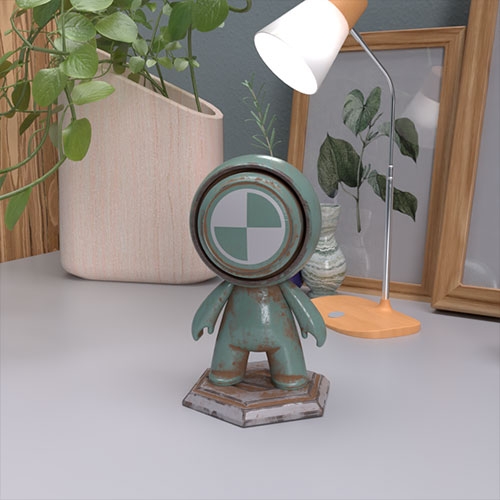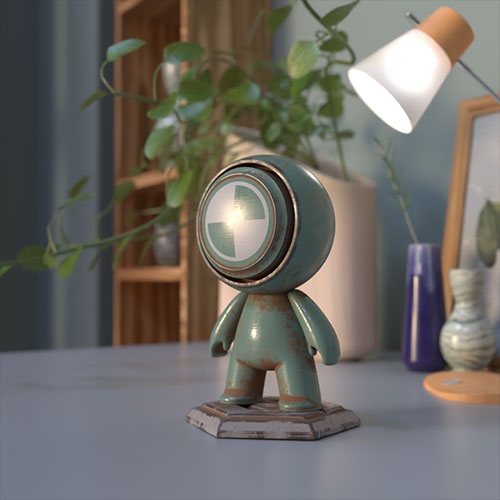Layout
Positioning 3D objects to create the scene composition.
Layout features are:
Universal transform tool.
Align and Distribute tool.
Snapping.
For more details, see layout in Dimension.
Learn how to build a 3D scene, render it and export it once you are done.
Dimension is an intuitive and powerful design tool for building 3D scenes. Building a 3D scene encompasses a few steps, also known as staging. These steps are layout, texturing, lighting, and framing.
This staging workflow can create a wide variety of projects. Stage virtual photography for products and goods. Visualize interiors or spaces. Create illustrations and brand graphics.
LayoutPositioning 3D objects to create the scene composition. Layout features are:
For more details, see layout in Dimension. |


|
TexturingApplying materials and textures to the objects. Texturing features
For more details, see texturing in Dimension. |


|
LightingCustomize your environment light to set the mood, contrast, and focus.
For more details, see Lighting in Dimension. |


|
FramingUse virtual cameras to set the viewing angle, depth of field, and output ratio.
For more details, see framing in Dimension. |


|
The most common export type is to render the 3D scene data into images. Dimension combines real time, interactive, and offline rendering capabilities. Customization of the render engines allows for flexible control over speed and quality. The Adobe Substance apps share physically based rendering engines to ensure consistent results.


Use Send to Aero to export your scene data for use in Adobe Aero. Build interactive experiences in augmented reality, then share them.


Learn more about Adobe Aero.
Design stunning 3D visuals with Dimension
Create photorealistic 3D images for product mockups, branded content, and more.